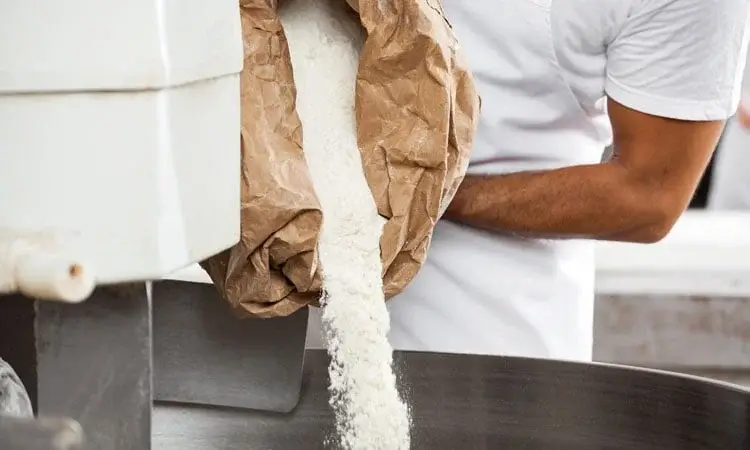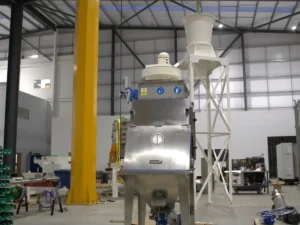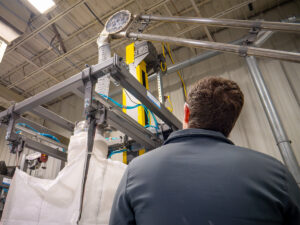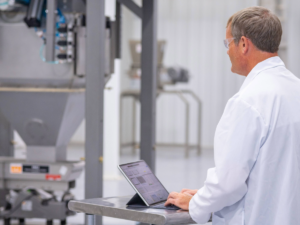Choosing the right conveyor for bulk bakery ingredients is a critical decision for bakery manufacturers aiming to enhance efficiency and product quality. In a landscape where automation is increasingly vital to address operational challenges, it’s important to have diverse equipment options available. Chris Brennan, a representative from Spiroflow, sheds light on the array of options available to enhance the processing of bulk bakery ingredients.
To choose the right conveyor solutions for bulk bakery ingredients, consider factors like material compatibility, capacity, environmental conditions, maintenance, safety features, and cost. Partner with experienced belt conveyor manufacturers like Spiroflow for professional guidance and support.
Innovative Solutions for Handling Bulk Bakery Ingredients
The food manufacturing industry is facing multiple challenges, including rising labor costs, operational mishaps, the risk of cross-contamination, and heightened concerns about worker safety. All of these have prompted the bakery sector to embrace specialized equipment and automation, aiming to streamline their handling processes effectively.
How to Choose the Right Conveyor – What to Know
Choosing the right conveyor technologies is an important decision for various industries, ensuring efficient material handling and streamlined processes. Although many bakery material producers’ first choice would be conveyor belt solutions, many more innovative options are available on the market. To make an informed choice, consider the following factors:
- Material Compatibility
Assess the type, size, and characteristics of the materials to be conveyed. Ensure the conveyor is suitable for the materials’ weight, size, and properties.
- Conveyor Type
Select the appropriate conveyor type for your application, such as belt conveyor system, screw, roller, or pneumatic conveyor. Each has its unique strengths and weaknesses.
- Capacity and Throughput
Determine the required conveying capacity in terms of volume or weight per unit of time. Ensure the chosen conveyor can meet these demands.
- Maintenance and Cleanability
Assess the ease of maintenance and cleaning. Conveyors should be designed for accessibility and hygiene, especially in industries like food processing.
- Energy Efficiency
Opt for conveyor systems that are energy-efficient to reduce operating costs and environmental impact.
- Safety Features
Prioritize safety by selecting conveyors with appropriate safety features, like guards, emergency stops, and sensors to prevent accidents.
- Customization
If your application has unique requirements, look for conveyors that can be customized or configured to meet your specific needs.
Revolutionizing Ingredient Handling – Modern Solutions for Bakery Manufacturers
In the past, before technological advancements, the reception and transfer of ingredients throughout different stages of the production process were primarily carried out manually. However, in today’s landscape, a diverse range of bulk material handling equipment is readily accessible, aimed at addressing the processing challenges encountered by bakery manufacturers.
Some bakery products are better suited for automated bulk handling solutions than with conveyor belts. While minor ingredients are usually managed manually or with microdosing systems to enhance accuracy, handling large quantities of flour and sugar can pose significant production challenges. This makes automated conveyors like aero-mechanical or flexible-screw conveyors a more suitable choice for these ingredients.
We’ll explore some of these available options and delve into the importance of testing and monitoring your ingredient-handling equipment.
Flexible Screw Conveyors Solve the Challenges With Sugar Conveyance
A flexible screw conveyor is excellent for handling flour, but the spiral type depends on the specific flour. It’s hygienic and ideal for preventing degradation. Jacob’s Bakeries Ltd uses it to feed brown flour into their mixer.
However, handling powdered sugar is tricky due to its flammability. Choose a conveyor system following safety guidelines. It can clump, so you may need additional measures for smooth discharge.
Granulated sugar is abrasive and combustible, demanding a conveyor designed to prevent dust and static issues. The flexible screw conveyor is a safe choice. Remember, sugar absorbs moisture, so additional flow aids may be required for complete discharge.
Aero-Mechanical Conveyors Handle Flour and Sugar Conveyance Gently and Efficiently
The aero-mechanical conveyor is an alternative to the flexible screw conveyor. It uses an airstream, high-speed discs, and a rope to move products gently up the tubes. This conveyor is an excellent choice for handling flour because it contains dust, unlike the traditional conveyor belt systems, reducing the risk of static-related explosions and making it ATEX-compliant.
It’s also airtight, energy-efficient, and quiet, making it ideal for conveying larger sugar volumes while also maintaining product integrity. Aero-mechanical conveyors offer operational benefits, minimizing product spillage and contamination risks and improving equipment cleanliness and operator productivity.
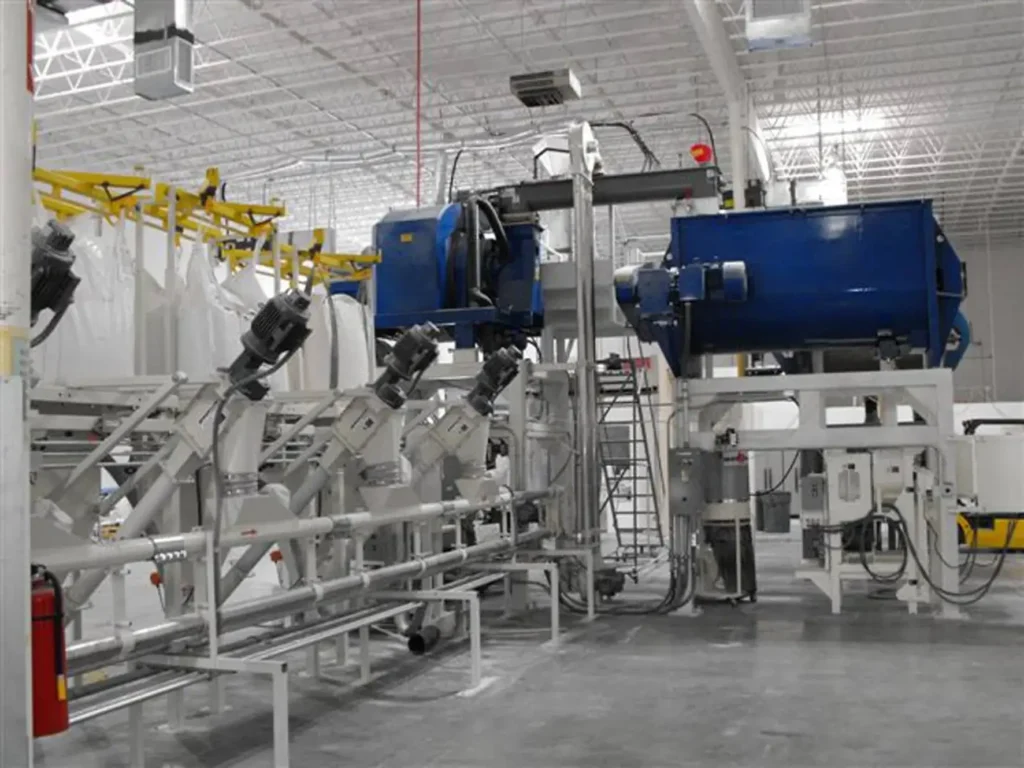
Crucial Role of Bulk Bakery Ingredients Product Testing
When it comes to choosing the appropriate industrial conveyor systems for handling bulk bakery ingredients, conducting a thorough product test is of utmost importance. This ensures that the right selection is made and helps prevent potential issues down the line.
Seek out conveyor suppliers with access to materials testing laboratories and machinery test facilities. These should be equipped with a wide variety of conveyors, along with bulk bag fillers and unloaders. A quality testing facility will offer in-depth scientific analysis of bulk solids or powders, covering parameters like bulk density and particle size.
Product testing should be done in the following situations:
- When you’re purchasing a new conveyor or machine that hasn’t been used before or when introducing a new product into an existing system. Different materials may behave uniquely on various conveyors, so testing is essential to match the right conveyor type to the product’s behavior.
- When dealing with products characterized as “difficult to handle,” such as those prone to being friable, sticky, hygroscopic, or prone to caking or packing.
- When working with a new machine supplier for the first time. Reputable suppliers of conveying, unloading, and discharging equipment typically advise conducting material trials to avoid potential application issues.
- When there’s a specific throughput requirement. In such cases, testing is advisable to accurately determine the expected throughput and ensure it meets your needs.
While testing conveyors is essential in the previous circumstances, it is also highly recommended in some more specific situations, such as:
- Assessing Blending and Mixing
Since the separation of blends and mixtures can pose challenges during conveyance, testing helps determine whether a product is prone to segregation.
- Evaluating the Rate of Flow
As ingredients exhibit varying flow characteristics, some may clump or solidify while others become more fluid during transportation. Machine testing is instrumental in understanding material flow.
- Analyzing Particle Properties
Because bulk solid bakery ingredients differ significantly in terms of particle composition, size, shape, and density, it’s crucial to comprehend these characteristics for effective equipment design and selection.
Upgrade Your Manufacturing Process With Remote Monitoring
Because a manufacturer’s profits rely on accurate and dependable production, it’s crucial to stress the significance of keeping an eye on and taking care of automated material handling equipment. If a machine stops working during a shift and there aren’t essential spare parts nearby, it can lead to expensive delays.
To address this challenge, conveyor systems manufacturers are increasingly adopting remote monitoring solutions. This technology empowers them to gather and analyze machine data, enabling predictive maintenance planning and the identification of potential operational bottlenecks.
Yet, remote monitoring goes beyond enhancing machine efficiency. It also offers significant health and safety advantages. It’s a cornerstone of workplace safety, vital for achieving optimal operation, averting substantial production disruptions, and, most crucially, safeguarding employees.
Moreover, remote monitoring provides a holistic view of equipment across the site, allowing management to track key indicators related not only to production but also to safety compliance. This comprehensive perspective helps in identifying and rectifying potential safety issues within the manufacturing process.
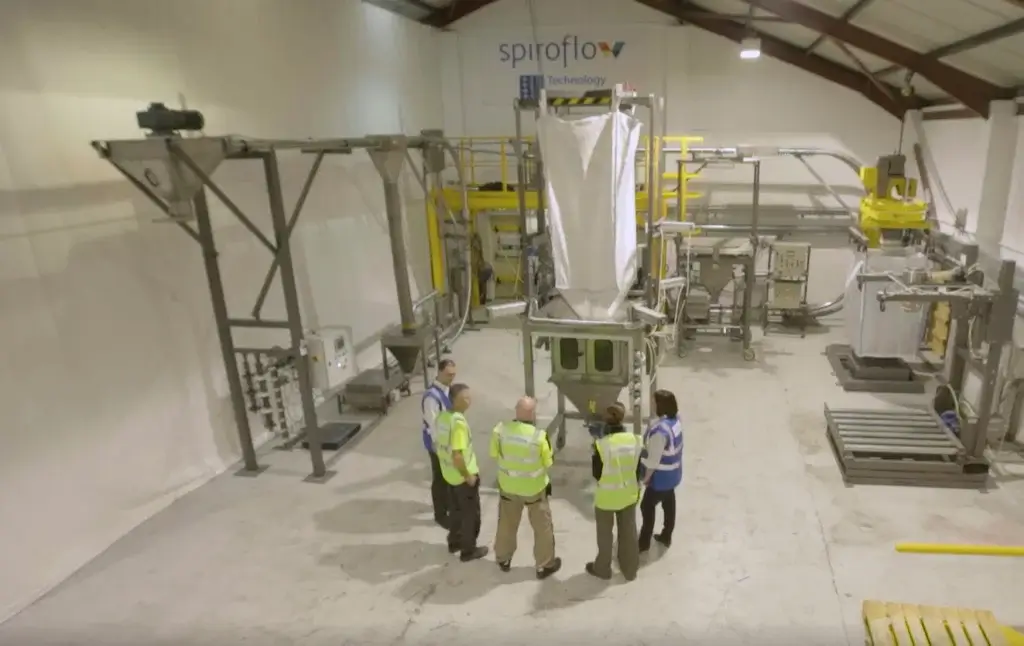
Explore the Spiroflow World of Ingredient Handling Solutions
While we’ve discussed two key pieces of conveying equipment, the world of ingredient handling offers a diverse array of options. You may opt for more innovative options than the conveyor belt system, such as drag chain conveyors, tubular cable drag conveyors, bulk bag fillers, gain-in-weight or loss-in-weight systems, bulk bag unloaders (super sack unloaders), and customizable processing solutions.
For bakery manufacturers seeking to embrace materials handling automation, the path to success begins with rigorous testing and partnering with an experienced supplier who can deliver professional guidance and support. For expert advice on selecting the right conveying solutions, contact Spiroflow today.

